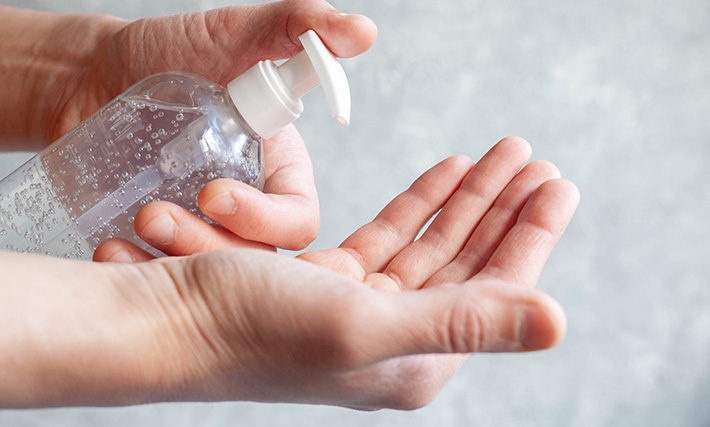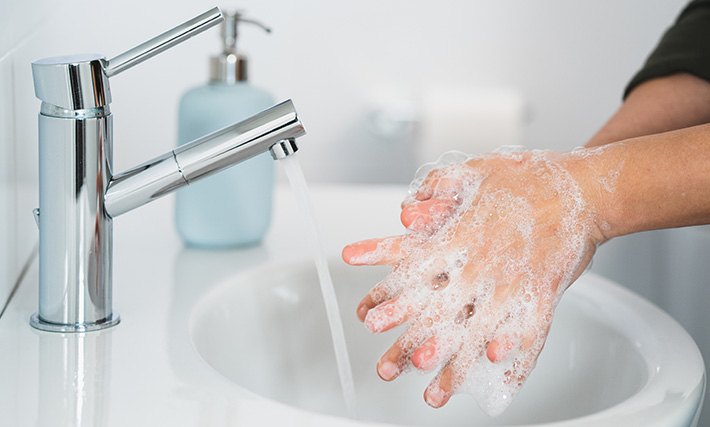Hand Sanitizer vs. Hand Washing: Is One Method Better Than The Other?
Hand sanitizer vs. soap is one of those ongoing debates that has more than one “right answer.” People are more focused on germ removal than ever before. This begs the question: when is hand-washing appropriate, and when should you use hand sanitizer? Should you be using both? Does it make a difference? We offer a wide variety of products, such as hand sanitizer and hand soap, that can do the job and do it well... but have you ever asked yourself if you should favor one method over the other?
The answer is found in how these products actually work. Hand sanitizer, for example, removes germs by killing them on your skin. By contrast, washing hands with soap and water doesn’t kill germs. Instead, it removes them physically from your hands, carrying them away rather than killing them in place. So, that brings us back around to the question: To stay healthy, should you try to kill the germs, or simply be satisfied to get them off you? To put it another way, which process keeps you safer? It turns out that one isn’t really “better” than the other. Which you use depends on the situation.

Hand Sanitizer vs. Soap: All About Hand Sanitizer
Hand sanitizer is nothing more than a means of applying alcohol to the skin (homemade hand sanitizer, for example, is a mixture of alcohol and aloe vera). Hand sanitizers come in gel, liquid, and even foam. They are agents containing some percentage of isopropyl alcohol or ethyl alcohol (some hand sanitizer uses n-propanol, too). Alcohol kills many germs (bacteria, viruses) it touches (although it’s important to remember that it can’t kill ALL of them). The CDC recommends at least 60% alcohol to kill most household and environmental bacteria & viruses.
Most people don’t realize that when they use hand sanitizer, they’re not using ENOUGH of the product to kill all the germs possible. When applying sanitizer, use a generous amount. Apply & rub it into your palms and then rub it on the backs of your hands, under your nails & between your fingers for at least 20 seconds or until it dries. This gives the sanitizer enough time to work.
Hand sanitizer is most appropriate (compared to soap & water) when you don’t have easy access to water. You can carry it with you and kill germs wherever you are — even on the go. It’s a great idea for every business to keep hand sanitizer at high-traffic locations like reception areas, entrances/exits, etc.
Hand sanitizer is more expensive than soap because it does what soap typically can’t — namely, kill germs in place and conveniently on the go. The ingredients in hand sanitizer, while not really complicated, still cost more than the component parts of soap. Packaging ups the price a bit, as well.
Another thing to consider is that frequent use of hand sanitizer can dry out your skin and strip away its outer layer of oil. Cracks in your skin can lead to openings that allow viruses and bacteria to enter. Many hand sanitizers incorporate moisturizers for this reason. If you’re using a hand sanitizer that does not contain moisturizer, or your skin still feels dry, include a moisturizing hand cream in your daily regimen. This will restore your skin and help prevent dry, cracked hands.

Soap and Water vs. Hand Sanitizer: The Lowdown on Soap
Hand soap is one of the oldest cleaning agents known to human beings and pretty basic - oil, water and lye (100% sodium hydroxide) in its most simple form (detergents, by contrast, are chemical compounds). When soap and water are applied to something, they solubilize foreign particles and emulsify oils in order to either break them down and/or carry them away. All of that is a fancy way of saying that soap and water, combined with vigorous hand rubbing, physically washes away germs (and other foreign particles) to remove them from your hands. In the case of something like a coronavirus, the oils present help break down the proactive barrier around the germ, and make it unstable and effectively dead.
Hand-washing is most appropriate when you have access to clean running water. Wash your hands vigorously with soap and water for at least 20 seconds (per CDC guidelines). Remember, washing your hands is only as effective as your efforts - cover all parts of your hands with the lather, between your fingers, under your nails, up beyond your wrists and around your thumbs. No skimping.
Soap generally costs less than hand sanitizer because its component ingredients are less expensive. Of course, there are expensive designer soaps, too, with ingredients like essential oils, fragrance, charcoal, oatmeal and more. What you choose will come down to your preference and budget — as well as where handwashing with water and soap is convenient for you. Remember, though, that frequent hand washing can dry out your skin just like using hand sanitizer can. Use a moisturizer to protect your hands and keep your skin hydrated.
Washing Hands With Soap and Water vs. Hand Sanitizer
Choosing to wash hands with soap and water vs. hand sanitizer treatment is all about convenience. Hand sanitizer kills germs in place on your hands when you don’t have ready access to water. Soap and water, by contrast, rinse germs off you, without necessarily killing them -- but only when you’re near a faucet.
Whichever method you use, frequent cleaning and sanitizing your hands is the best way to avoid getting sick. The great thing about washing hands with soap and water vs. hand sanitizer is that the two complement each other. You can use hand sanitizer to kill whatever germs possible, then wash with soap and water to rinse away whatever the sanitizer doesn’t kill.
Related Content:
Empower your staff and reassure your community with our FREE downloadable cleaning and disinfecting guides for fitness centers, educational settings, hospitality facilities and more.
Topics from this blog: #trending
Back


